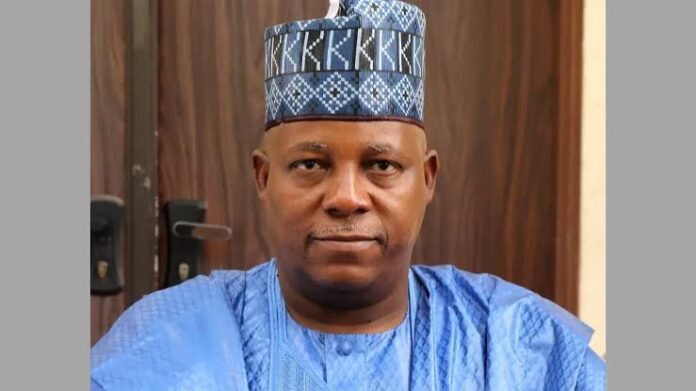Memo to VP Shettima: Northern Nigeria has no reasons to be poor through agriculture By Baba El-Yakubu
Culture



By Baba El-Yakubu
Dear Mr. Vice President, Kashim Shettima,
I watched your recent interview granted to the BBC Hausa. Your response to the Hunger Protests appeared sincere, genuine, and frank. My most important takeaway is your fervent desire to urgently convoke a summit of northern governors, the business community, and other stakeholders to find solutions to our current challenges. You asserted that northern politicians must avoid the tendency to sabotage the efforts of others and invited them to unite for the joint prosperity of the whole region. In these critical times, Nigeria specifically the north; stands at a crossroads. Unity is the most urgent requirement for the purposeful leadership you are bringing to the region. Our beloved region, rich in diversity and potential, is grappling with profound challenges that demand urgent and decisive action. As a leader entrusted with the hopes and aspirations of millions, your role is pivotal in shaping the future of the region. At the end of the interview, you made a bold statement that “Northern Nigeria has reasons to be poor”. Intuitively, we all agree that his statement is true. But, in the counterintuitive real world of Nigeria; we all know that the region is among the poorest in the world. This letter is written not only as a response to your interview but as a call for a kind of visionary leadership that our nation and region so desperately need. I believe this is your moment.
Whenever there are daunting challenges, we always raise our hands up skyward for inspiration; but in today’s northern Nigeria, I believe, the most important solution is down on the earth. In my view, agriculture is our short-term path to salvation. Therefore, the proposed summit and subsequent interventions should focus on agriculture and value-addition to agricultural produce. Mr. Vice President, to achieve anything impactful, the new interventions must avoid the lapses associated with the previous government program. For instance, the Anchor Borrower’s Programme (ABP) was the main agricultural intervention of President Muhammadu Buhari’s government. Its main thrust was growth and productivity. Unfortunately, none was impactfully achieved, commensurate with the huge amount of money invested. ABP scheme repayments default rate was estimated to be 76% according to International Monetary Fund (IMF). The default was associated with the fact that many of the recipients of the loans were not selected based on objective criteria. To avoid this challenge, I suggest adopting and scaling up business models similar to homegrown and private-sector-driven approaches that are already successful. We may also learn from case examples of successful reform in other countries.
The first good model to consider is a Nigerian company called Babban Gona (BG). It was founded in 2012 by Mr. Kola Masha. Its main aim is reducing unemployment in Nigeria through promoting agriculture. It started modestly with 100 members in Kaduna State. So far, it has operations in 15 states in the north and has impacted over 850,000 smallholder farmers. They have a net income of about double the national average. BG’s success is due to its simple business model. It engages smallholder farmers through four key services to drive their success. These are (i) Training and Education, (ii) Financial Credit, (iii) Agricultural Input, and (iv) Harvesting & Marketing Support. Similar to the successful approach of the Nobel Prize-winning Grameen Bank of Bangladesh, BG organizes the farmers into groups of 3 – 5 members. The training/education, credit, and input are all given on a group rather than on an individual basis. BG members have a loan repayment rate estimated to be at about 98%. Importantly, other group members are responsible for repaying if a member defaults. Therefore, using a simple model, Babban Gona achieves what Anchor Borrower’s Programme complicated approach failed to deliver. BG has investors both domestic and foreign. It focuses mainly on maize production. Northern Nigeria is endowed with extensive stretches of fertile land suitable for a variety of crops. Apart from maize, the region’s semi-arid to arid climate is particularly conducive to the cultivation of other grains such as millet and sorghum, as well as legumes like groundnuts and cowpeas. Additionally, areas with riverine soils, such as those near the Niger and Benue rivers, are ideal for rice and sugarcane production. For example, according to 2020 data from the National Sugar Development Council, Nigeria consumed about 1.5m tons of sugarcane. Almost all of it was imported. Under your leadership, special intervention funds – from Federal, State, Local Governments, and private investors – may be invested in BG or similar companies in Nigeria. The BG model works very well. It may be used to cover the production of other crops and legumes. There is no time to recreate the wheel.
Read Also:
Mr. Vice President, I want to emphasize that agriculture in northern Nigeria should not be limited to primary production; the development of agro-processing industries is essential to add value to raw agricultural products and generate further employment. Processing agricultural products locally not only increases their shelf life but also enhances their marketability and creates additional income streams for farmers. Let me give you another very good model to consider. It is a company called Psaltry International Limited (PIL), located in Iseyin, Oyo State. About two years ago, I visited the company for two days. I gained first-hand information on the its successful operations. It was established in 2005 by Mrs Yemisi Iranloye. Initially, it focused on selling cassava produce, mainly starch. PIL established its 20 MT/day starch factory in 2012 and installed an additional production line of 30 MT/day in 2015. Its outgrower programs involve up to 5,000 farm families. In addition to other sources, PIL ensures adequate supply to its 50 MT/day of installed capacity processing plant. Its main focus is to enhance the cassava value chain by producing high-quality industrial cassava derivatives, including high-quality cassava flour (HCCF), high-quality food-grade cassava starch, and sorbitol. The PIL new sorbitol factory is the first of its kind in Africa and the second largest globally. This factory has the capability to produce 25 tons of sorbitol every day. Its clients include companies in the pharmaceutical, personal care, food, and beverages sectors. Based on the company’s activities; its community has been transformed from poverty to prosperity within a short time. Recently, the company announced the 2024 scholarship scheme for children of farmers in Iseyin Local Government and Ibarapa area, Oyo state.
This is a beautiful success story of cassava processing. Other produce may be considered for different parts of northern Nigeria – depending on local conditions. For example, the establishment of rice mills in Kano and Kebbi states has created jobs, reduced post-harvest losses, and improved the quality of rice produced in the region. Similarly, groundnut processing plants can be established to produce groundnut oil, cakes, and other by-products, adding value to one of the region’s most important crops. The main requirement for success is to make the government intervention to be private-sector driven.
Sir, another area that needs careful planning is the gradual adaptation of modern agricultural machinery. Here, also we could learn from other case examples of reforms. Given this natural endowment, northern Nigeria should be a leader in agricultural production. However, outdated farming techniques, lack of access to modern inputs, and inadequate infrastructure have hindered the full realization of this potential. Most farmers in the region still use rudimentary tools like hoes and cutlasses, which limit the scale of their operations and the efficiency of their labor. By addressing these challenges through targeted agricultural reforms, the region can harness its land and climate to produce enough food to feed Nigerian population and generate a surplus for export. A look at agricultural reforms in other countries provides valuable lessons for northern Nigeria. For instance, the Green Revolution in India during the 1960s and 1970s transformed the country from a food-deficient nation to a food-surplus one. This was achieved through the introduction of high-yield variety (HYV) seeds, increased use of fertilizers, improved irrigation, use of mechanization, and government support for farmers. Mechanization—introducing tractors, plows, and other machinery—can drastically improve productivity. According to a recent report, 47% of agricultural operations in India are mechanized. It is higher in countries such as China, with 60%, and Brazil, with 75%. This is very important in improving farm productivity. It has been shown that for every 1% increase in the level of mechanization, the yields of all crops, grain crops, and cash crops increase by 1.2, 1.6, and 0.4%, respectively. Similarly, Ethiopia’s agricultural transformation strategy has been widely regarded as a success. By focusing on smallholder farmers, improving access to inputs, and investing in infrastructure, Ethiopia has made significant strides in food security and poverty reduction. These examples demonstrate that with the right policies and support, agricultural reforms can lead to substantial improvements in food security and economic development.
The introduction of modern irrigation techniques, such as drip and sprinkler systems, can also revolutionize agriculture in northern Nigeria. The region’s reliance on rain-fed agriculture makes it vulnerable to the erratic rainfall patterns caused by climate change. Based on recent estimate, the irrigated area in the whole country is only 5.4%. This is too low. For example, in India; 51% of the agricultural area cultivating grains is covered by irrigation. By investing in irrigation infrastructure, northern Nigeria can ensure year-round farming, thereby increasing food production and reducing the risk of food shortages. The adoption of modern farming techniques also extends to the use of improved seeds, fertilizers, and pest control measures. For instance, the introduction of drought-resistant and high-yield crop varieties can help farmers cope with the region’s climatic challenges while boosting crop yields.
Mr. Vice President, I agree with you that Northern Nigeria’s poverty is not a result of a lack of resources but rather a failure to fully exploit its agricultural and other potentials. With its vast arable land, favorable climate, and large population dependent on farming, the region has all the ingredients needed for agricultural prosperity. By learning from successful agricultural reforms elsewhere and focusing on modernization, mechanization, and value addition, northern Nigeria can achieve food security and economic growth. There is no reason for poverty to persist in a region so rich in agricultural potential—the future lies in unlocking this wealth through strategic reforms and investments. As you are aware, at the 29th Nigeria Economic Summit in Abuja, President Bola Tinubu announced an aspirational target for the Nigerian economy. It is expected to attain a GDP of $1.0 trillion in the next few years and $3.0 trillion within a decade. Based on this, I have been pondering on an important question. That is, how could a northern poor be an active participant rather than a passive observer in achieving this dream? Under your purposeful leadership, the north could transform Nigeria from a food-deficient nation to a food-surplus one, thereby making a substantial contribution to the GDP. Let me leave you with a beautiful saying from the Roman Philosopher Lucius Sereca, “It is not because things are difficult that we do not dare, it is because we do not dare that they are difficult”. If you declare to eliminate abject poverty in the north; it will take some years of hard work, but the dream will be a reality.
With Salam and best wishes, I thank you very much for your time.
Yours Faithfully
Baba El-Yakubu, PTDF-Chair Professor of Chemical Engineering, Ahmadu Bello University. Email: [email protected]
%%





